The Problem with POS Data for Supply Chain Forecasting
Executive Summary
- POS information is often proposed to be used to improve forecast accuracy.
- The evidence does not support that using POS does what vendors and consultants say it does.
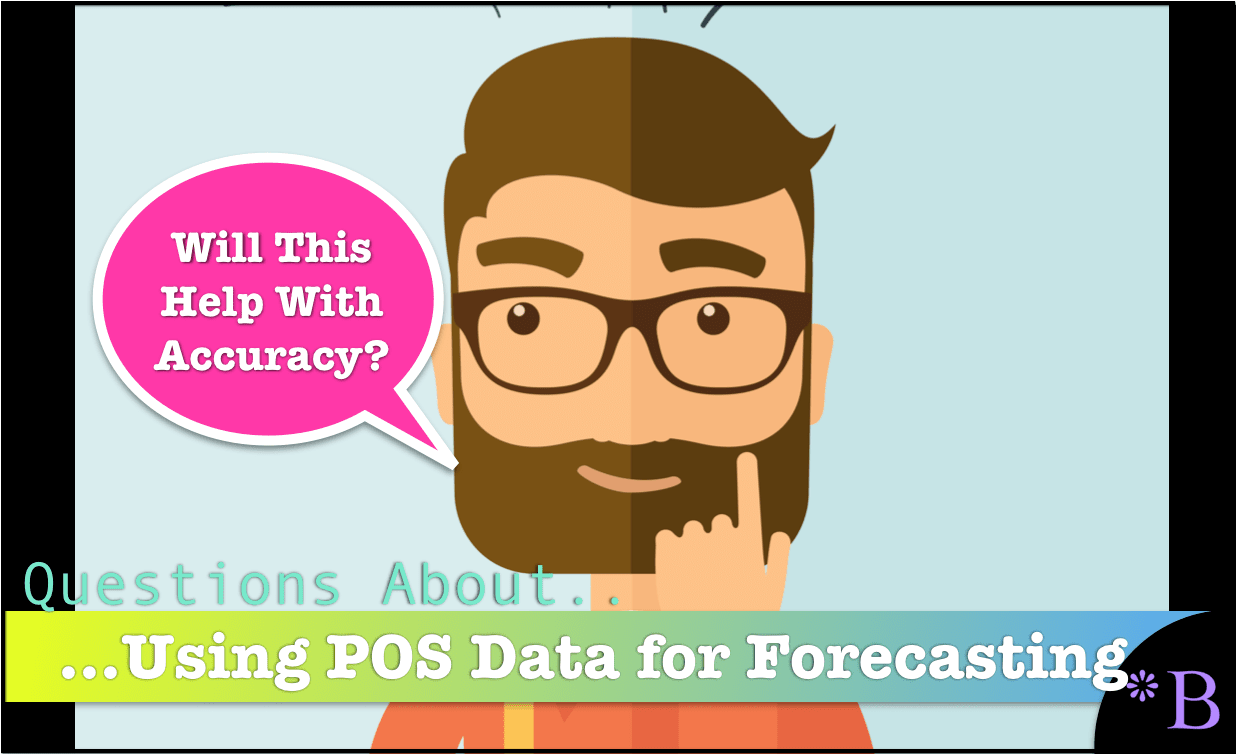
Introduction to Using POS Data for Forecasting
Using POS data is a frequently proposed way to improve forecast accuracy. Software vendors that do demand sensing use it as a primary strategy to, as they say, improve forecast accuracy.
See our references for this article and related articles at this link.
In this article, we will evaluate some logical issues with utilizing POS data for forecasting. This issue deals profoundly with time, which is challenging to visualize. To account for this fact, this article has many graphics to explain what happens when different data are incorporated into a forecast and when they are incorporated.
The Sample Scenario
To begin, we layout a straightforward scenario that is quite typical of forecasting and replenishment to a store.
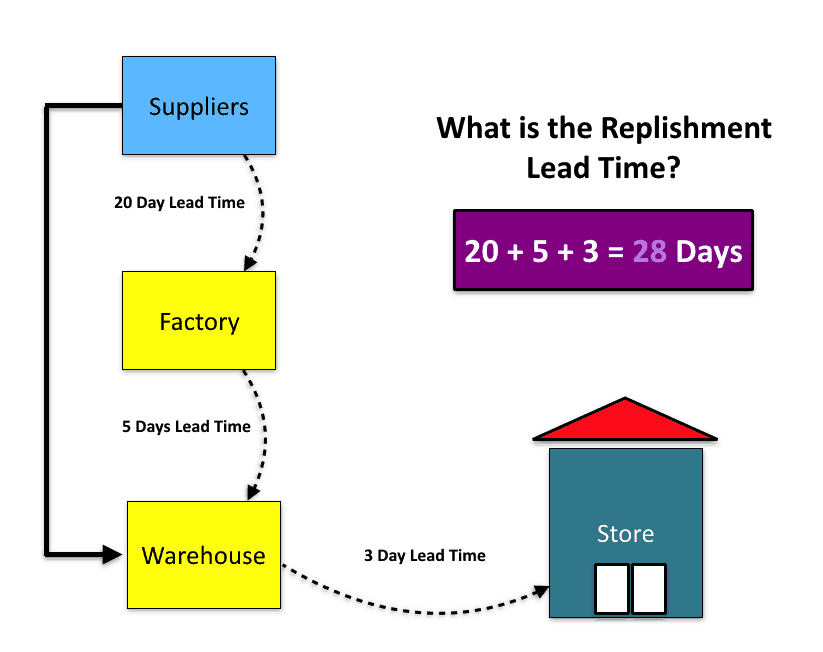
In reality, companies have goods issue and goods receipt times. But that complication does not add anything to the example and confuses things. So we will absorb goods issue and goods receipt into the lead times. The forecast lead time is from when the order must be placed for the item to arrive at the store eventually.
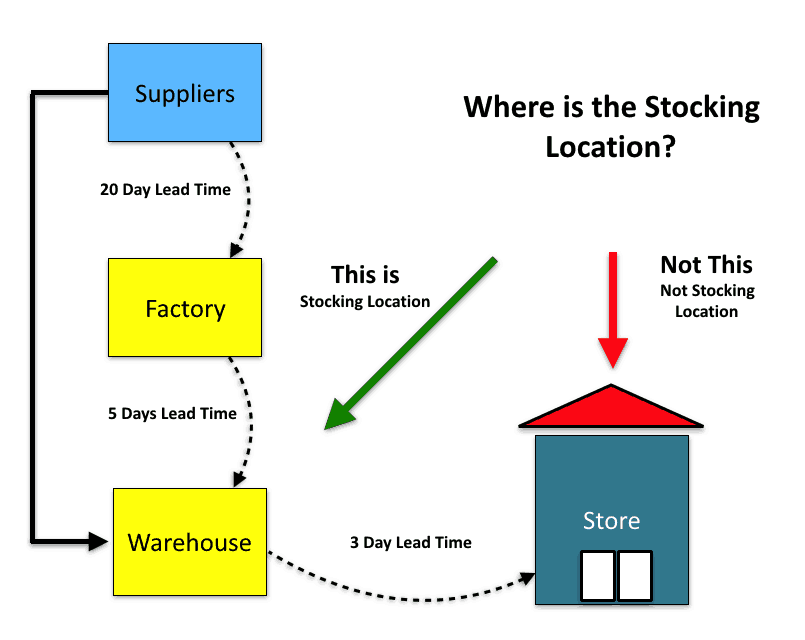
A significant factor to address is where is the stocking location. Multiple stores place a demand on a single warehouse. Therefore, the warehouse is the stocking location.
Due to the law of large numbers, the warehouse “demand” is far easier to forecast than the store’s demand.
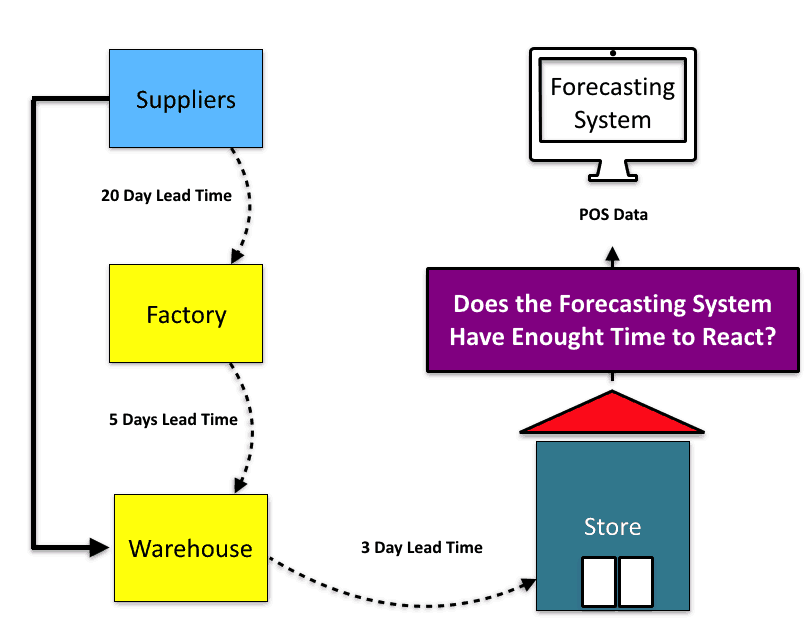
Many people assume that getting the most up to date information helps forecast accuracy. However, there is a lag between when the sales data is accumulated and when the order must be placed. If there were no lags, then forecasting would be unnecessary. One would merely send the quantity that had just sold.
Under the standard forecasting scenario, the POS data would eventually find its way into the sales history. But under demand sensing, the POS data from the last few days is used to influence a forecast, which is for time 28 days out into the future.
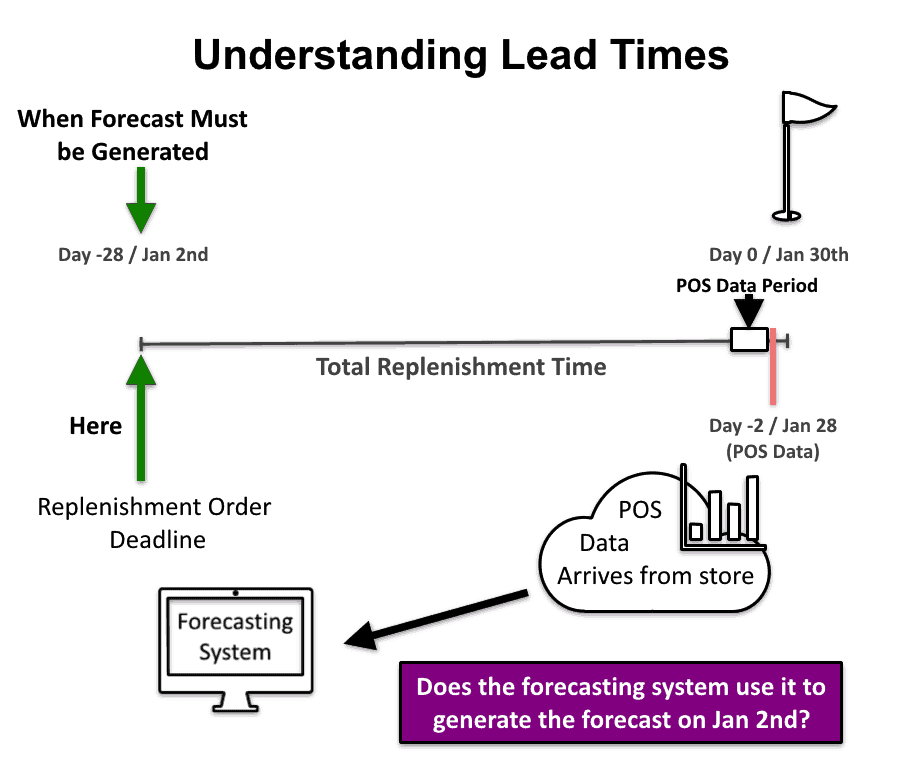
The critical point is not that POS data can be sent to a forecasting system.
It can.
The question is, what does the forecasting system do with it? Is it used to adjust the forecast on Jan 2nd?
If it is used to “adjust” any forecast that has already been made, it is irrelevant for supply planning. Therefore it is not forecasting or forecasting that is intended to improve the supply planning process.
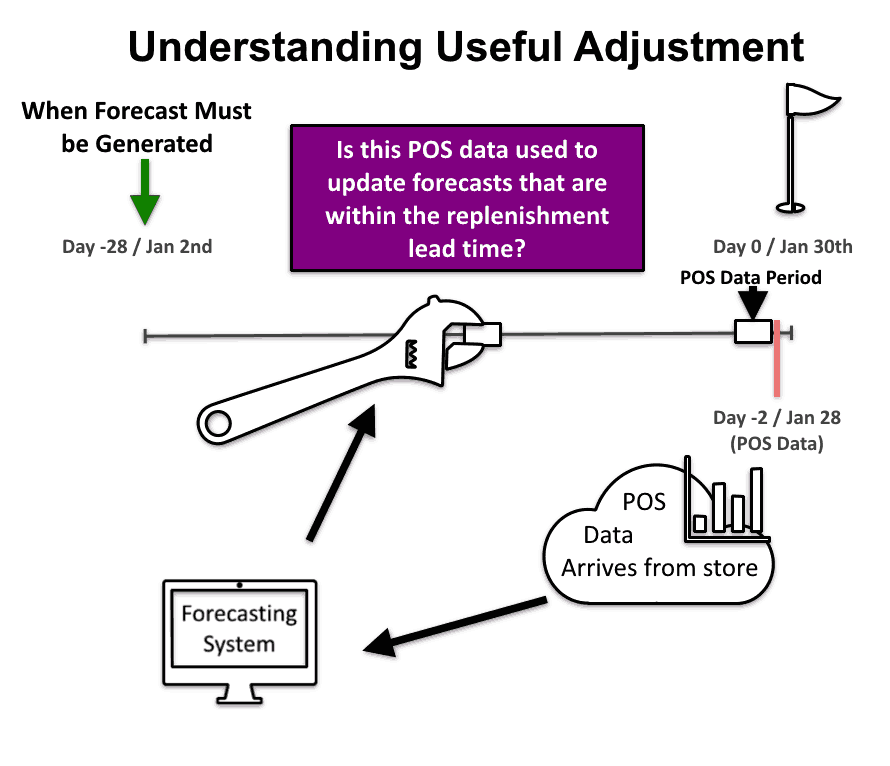
If this is done, it will alter the forecast history, making it perhaps more “accurate” but improving accuracy after it no longer matters.
An excellent way to obtain 100% “forecast” accuracy is to wait until all sales orders are complete and then overwrite all forecasts with actuals. This will produce perfect — and wholly falsified forecast accuracy.
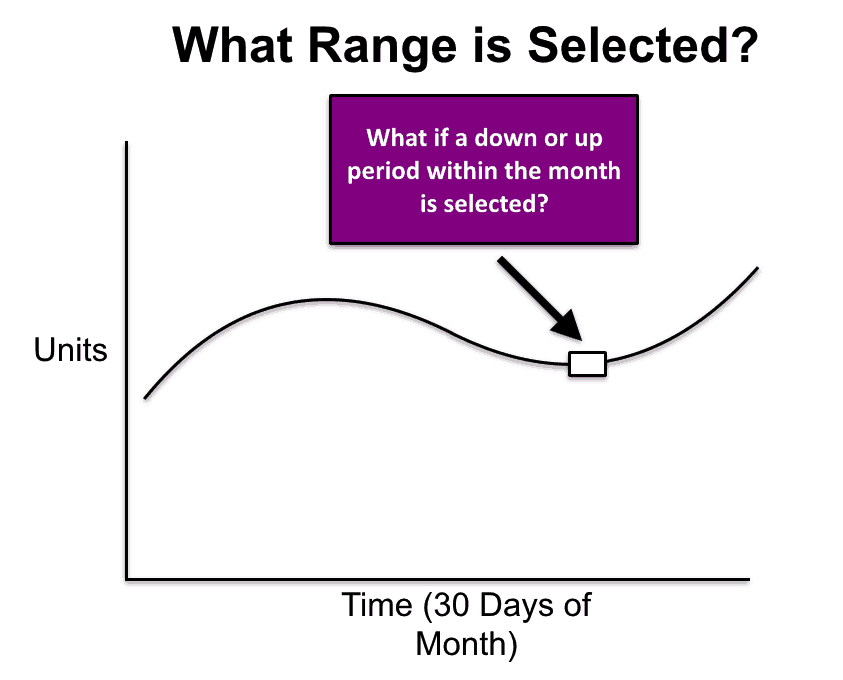
There is variation within a month.
If three days of sales are captured, how is it known if that is a low, medium, or high period?
This means getting into day by day variability analysis. However, usually day by day analysis is not considered relevant for forecasting as the planning bucket is either weekly or monthly.
But by instituting the use of POS data, now the company needs to answer this question. Furthermore, it is a question that is, in many cases, at least product specific if not location-specific.
After presenting this scenario to a colleague, they had the following counterpoint.
“The manufacturer uses demand sensing to get a better demand signal before the retailer or wholesaler places an order. Typical latency between POS and sales order to the manufacturer is between 2 and 4 weeks. So sensing buys the manufacturer this amount of time (quite a bit more than 3 days in your example). Much of the internal lead times at the manufacturer are less than this latency so this allows them to replace uncertain forecasts with certain demand signals. Many supply lead times for the manufacturer exceed this latency, so for those forecast accuracy comes into play. For those, the removal of bullwhip effect makes forecasting a lot easier. Rather than forecast large orders intermittently, they can forecast a large quantity of minute POS scans. Sure, if you go to daily/store/SKU granularity it is harder than weekly/warehouse/SKU. But sensing based on traditional deterministic algorithms can simply group to the level they work best.”
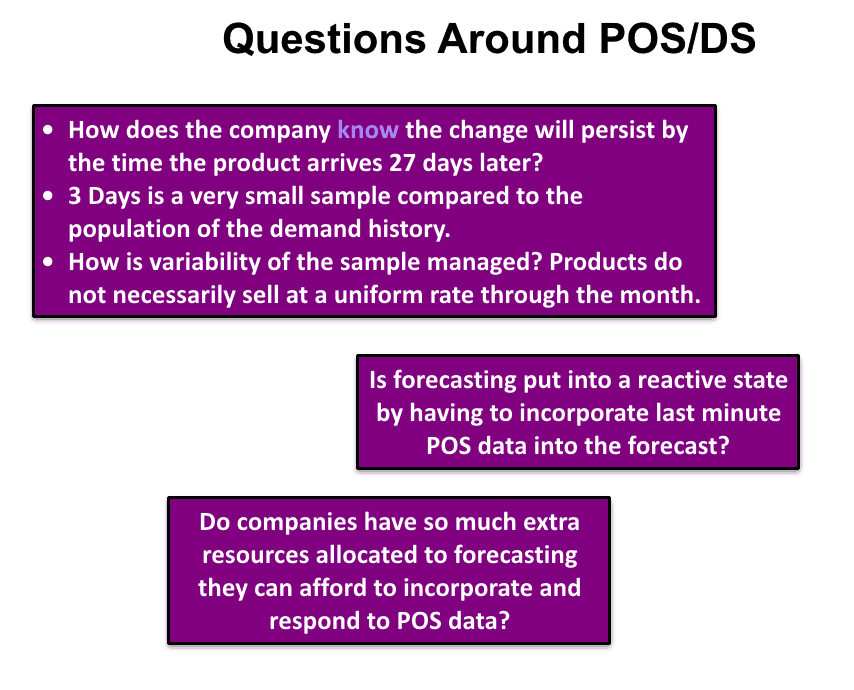
The answers to these questions would determine the effectiveness of using POS data for forecasting. But having worked in many customers, we know the answers to these questions, at least for most companies, even substantial companies.
Supply chain companies operate below where software vendors and consultants say they do. Forecasting implementations often fail to meet expectations, but software vendors and consulting companies don’t publish this information on their websites.
This brings up questions as to how POS data is being incorporated into forecasts, once you pull back the cover on the happy self-reported case studies.
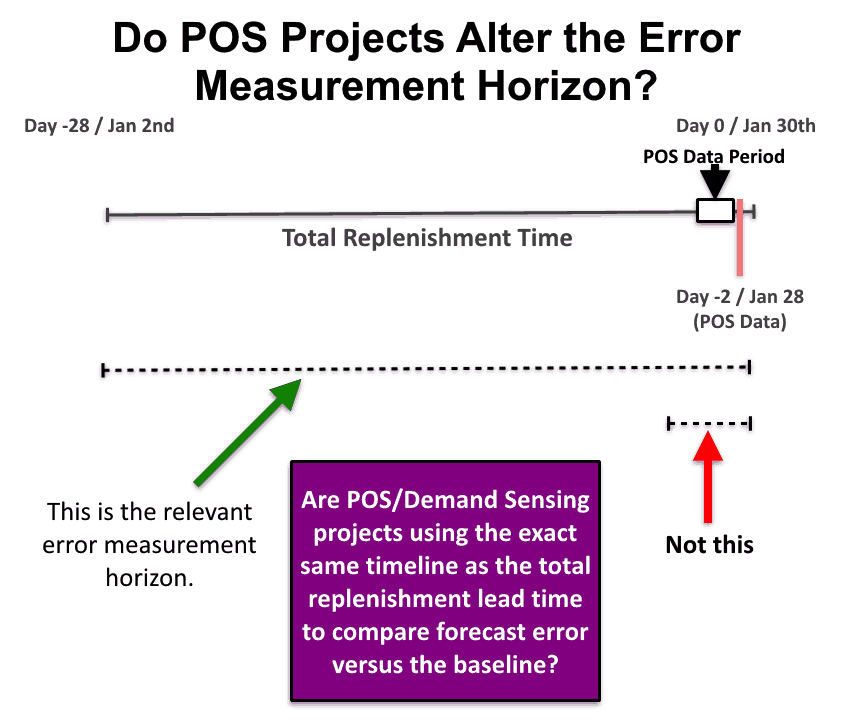
One should be suspicious if the error measurement time horizon changes after a POS demand sensing project.
Conclusion
Incorporating POS data into forecasts is fraught with many issues. It can be used by consulting companies and software vendors to assist in forecasting departments, mostly make the forecast accuracy look better than it is.